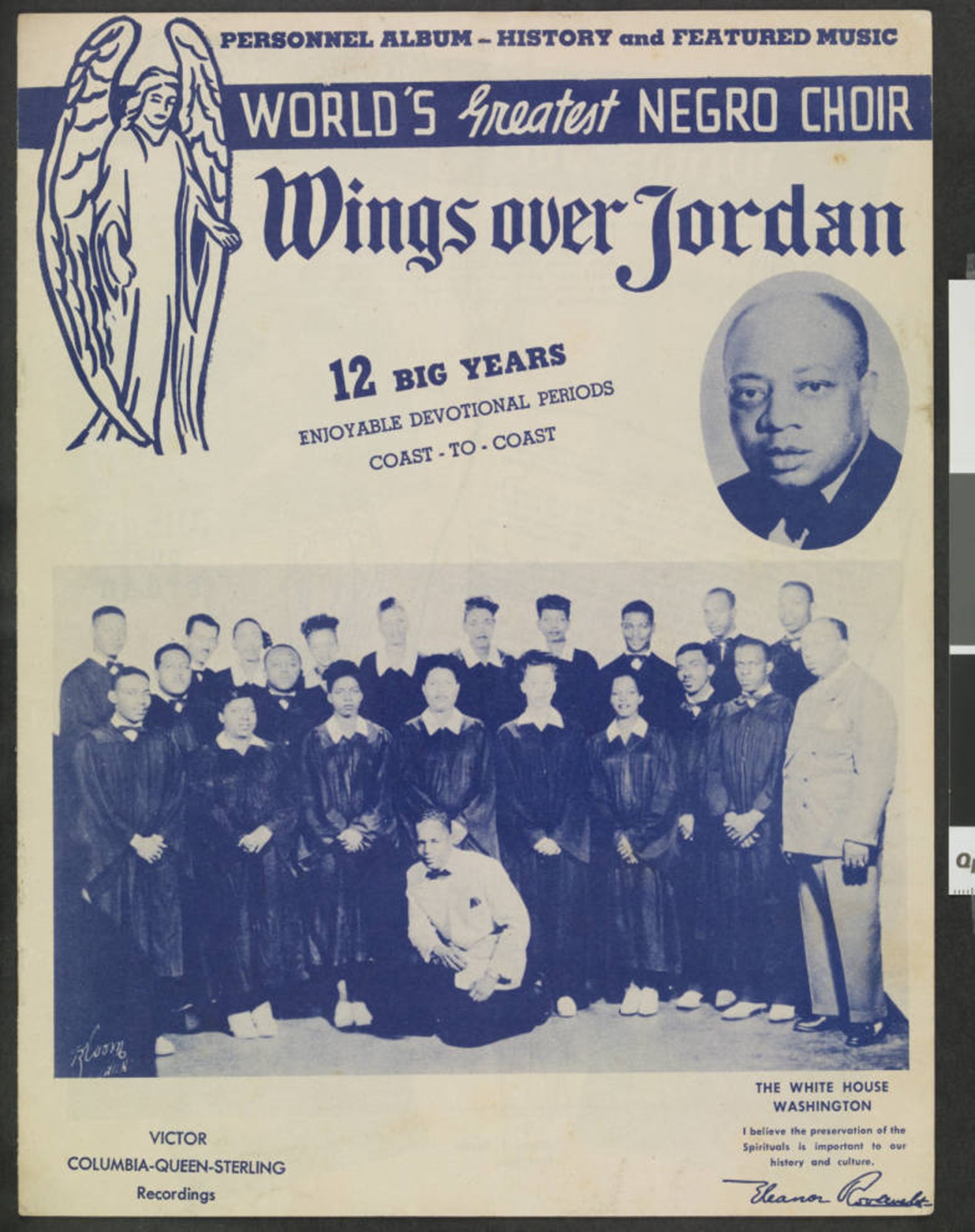
Performers of Gospel Music and Their Techniques: Choirs 2
Performing in a similar manner as the Hall Johnson Choir, the Gospel Choir of First African Methodist Episcopalian Church (a.k.a. FAME, as shown here) composer, choir director, singer, and actor Jester Hariston became prominent in Los Angeles.
As previously mentioned, depending on the church, certain pastors and congregants rejected what they called the "devil's music" or "gospel entertainment" for worship services. Nevertheless, "Despite the popularity of quartets, groups, and soloists, gospel choirs became prevalent in the late 1940s and early '50s" (Jackson 1995, 197).

Fame Choir
It is important to note not all choirs sang gospel music during Gospel's golden age. For instance, even though the choir at Gethsemane Baptist Church of Cleveland, Ohio, was established before Gospel's golden age, it sang mainly hymns and spirituals during the 1940s. Furthermore, their CBS radio broadcast titled Wings Over Jordan, which began in 1938 felt it necessary to continue singing spirituals as they accompanied sermons and often serious lectures about African Americans' struggles. This video includes an excerpt about a 1939 lecture via the Wings Over Jordan broadcast. Some choral singing is also present.
Regarding gospel music performance by a choir, let's examine the St. Paul Church Choir of Los Angeles. During the mid-1940s, Rev. John L. Branham was responsible for the new direction of the already established St. Paul Baptist Church of Los Angeles. Born in Texas but raised in Chicago, Branham was familiar with gospel there and in 1946 brought James Earl Hines of Georgia to lead the music ministry at St. Paul's. Branham was interested in having a national radio program and soon hired Joe Adams as producer and broadcaster and Gwendolyn Cooper as a pianist. With a team of well-qualified professionals and a 100-plus voice-choir, Branham named the broadcast the "Echoes of Eden" choir. By 1947 St. Paul's radio program, recorded live from the church's auditorium, received national notoriety on KFWB radio. Soon people began attending St. Paul's to hear this different sound for church music. Each broadcast began with Eden Choir's Echoes singing "I'm So Glad" while "God Be With You" was sung after each service. Both songs were recorded as singles by Capitol Records in 1947 and eventually added with others on their album On Revival Day: the St. Paul Church Choir of Los Angeles (1957).
In I'm So Glad (Jesus Lifted Me)"the performance entails the typical call-and-response style of singing that fits a congregational setting. Performed moderately fast and accompanied by piano and handclapping throughout the song, it produces a positive lyrical message of deliverance and salvation. The Choir sings "I'm so glad Jesus lifted me" as the response throughout, while a solo voice, as the call, inserts lyrical personal testaments with phrases such as "Satan had me bound" and "when I was in trouble," as to why he's so glad Jesus lifted him.

The St. Paul Church Choir / I'm so glad (Jesus lifted me) [ 00:00-00:00 ]
It's a Highway to Heaven
It's a highway to heaven
None can walk up there
But the pure in heart
It's a highway to heaven
Walking up the king's highway
Precious Lord
Through the storm, through the night
Lead me on to the light
Take my hand precious Lord, lead me home







